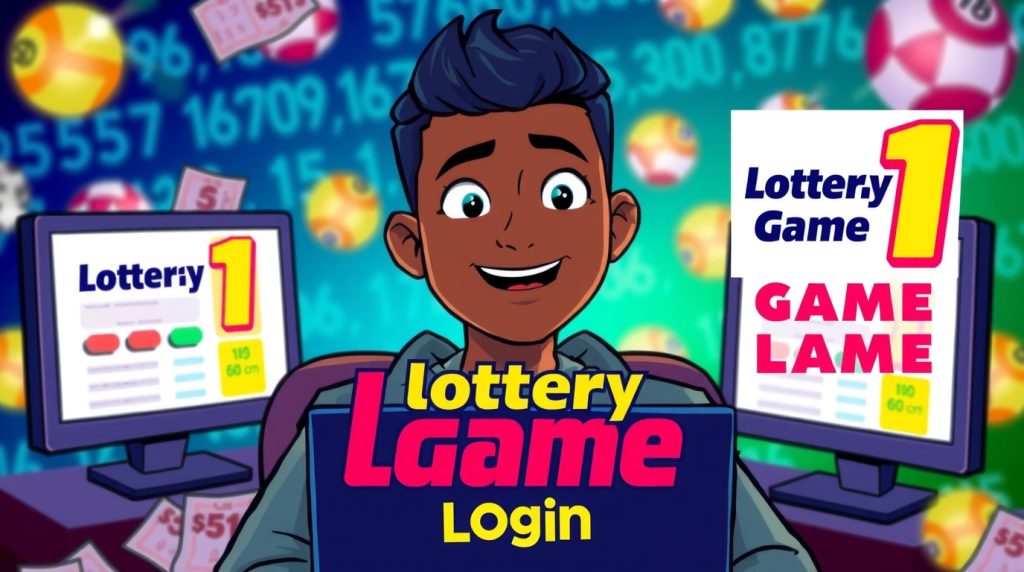
As online lotteries get more advanced, players have moved from filling out paper tickets at the store to fast, safe, and easy games on the web and their phones. A vital piece of that process is the “lottery 1 game login” that lets players get on to their accounts.
Though it looks like just a normal username-and-password box, a lot is happening behind the scenes to keep everything secure. In this post, we break down the technology and design that make modern lottery logins bulletproof, yet simple to use, looking at the top strategies for logging in, encrypting data, scaling for millions of players, and creating a smooth user experience.
What is “Lottery 1 Game Login”?
The “lottery 1 game login” is the secure door to a lottery website or app. After logging in, players can join live draws, see past winning numbers, or check their digital balance. From a developer standpoint, the system includes:
- User authentication to verify who they are
- Session management to keep users “logged in” safely
- Data encryption to protect passwords and personal data
- API security to guard any data that apps send and receive
- Multi-device support so users can switch from phone to tablet without retyping everything.
Building a login this safe and easy is key for keeping players confident, for meeting strict government rules, and for stopping cheats. A well-designed system protects players while letting them game, making it the backbone of any digital lottery.
Key Technical Components of a lottery 1 game login System
- Authentication Methods
The first checkpoint of a lottery login is to confirm who the player is. The methods we choose must strike a balance between ironclad security and easy use. Some industry-standard options are:
- Email plus a strong password, storing the password with salted hashing, usually with bcrypt.
- OAuth 2.0 links to popular platforms like Google and Apple for one-click social login.
- Two-Factor Authentication (2FA) via SMS codes or time-based authenticator apps.
- Mobile biometric options, permitting Face ID or fingerprint scanning in our app.
Passwords must be stored with one-way hashing and never, under any circumstances, in plain text.
- API and Session Token Security
Today’s apps often connect the web or mobile front end to backend services via REST APIs or GraphQL. Because login is a prime target for attack, we must enforce strict token controls.
- JWT (JSON Web Token) is the token format of choice for its stateless yet verifiable design.
- We include expiration dates so the token is valid for a short, precisely defined period.
- Each token is signed with a strong secret key to prevent forgery.
- Any sensitive API call must check that the token is present in the HTTP Authorization header:
Bearer <token>. - Finally, HTTPS is mandatory for the entire app to shield tokens from man-in-the-middle attacks.
- User Session Management
Since lottery platforms handle real-time game results and financial transactions, protecting player sessions is paramount.
- System must enforce a maximum session length, with the option to renew via a silent authentication check.
- Automatic idle timeouts can log players out after a defined period of inactivity.
- Allowing only one active session per account can prevent hijackers from stealing long-lived credentials.
- Logging out of the web app must invalidate the token on the server, forcing instantaneous expiration of any cloned token on-device.
Best practices continue to evolve but today’s core guidelines include:
- Auto-logout on inactivity; 15 minutes is generally a safe duration.
- Token refresh mechanisms help keep long sessions active without compromising security.
- Secure token storage; use HTTP-only cookies on web or Keychain/Keystore on mobile.
- Combine IP tracking with device fingerprinting to flag unusual lottery 1 game login behavior.
4. Frontend Integration and UX
Robust security must never ruin usability. Achieve both with how you build the front end:
- In-line validation for username and password fields.
- Helpful error messages that don’t give attackers clues—e.g., “Credentials don’t match” versus “Password is wrong.”
- Secure “remember me” features driven by cryptographic tokens.
- Multi-language support to serve global audiences.
Technologies such as React, Vue, or Angular make it easy to create adaptable interfaces that tie securely to protected APIs.
Database and Infrastructure Considerations
Security starts at the database layer and cascades outward.
- Store credentials in PostgreSQL or in a secured MongoDB cluster.
- Leverage Role-Based Access Control (RBAC) to keep admin and regular user paths distinct.
- For traffic spikes, scale horizontally and use load balancers to distribute the load evenly.
- Always implement rate limiting and challenge-response mechanisms to thwart brute-force and abuse attempts.
Monitoring and Logging
To keep your lottery 1 game login secure and efficient, deploy tools like ELK Stack, Prometheus, or Sentry. These solutions can log failed login counts, flag unusual patterns, and alert you to shifts in performance.
Security Compliance and Audits
When your lottery platform serves players in regulated regions, the lottery 1 game login system must meet strict legal standards. Study and implement requirements from:
- GDPR (EU)
- CCPA (California)
- ISO/IEC 27001
Make sure that you:
- Get explicit user consent to save data
- Link to clear and straightforward privacy statements
- Empower users to reset passwords or delete their accounts at any time
Optimizing for Mobile lottery 1 game login
Since the majority of players log onto lottery apps with smartphones, mobile optimization is non-negotiable. Focus on:
- Enabling biometric sign-in through the device’s native passwords
- Safely encrypting tokens and saving them in secure device storage
- Using responsive frameworks like Flutter or React Native for consistent UI
- Caching non-sensitive data to allow limited offline login.
Conclusion
Building the lottery game login system is not just about the UI for typing in a username and password. It’s a series of connected choices in security measures, performance engineering, and experience design. As the platforms expand, especially on mobile, a strong yet user-friendly lottery 1 game login system turns from a cost to your best marketing argument.
By combining smart techniques in lottery 1 game login security, data scrambling, and resource-sharing design, developers can create lottery systems that are both super-secure and genuinely trusted—and that’s what users love most.

